by Laura Kadi, Art Conservation Intern 
When we think of accidents, we think of random, sudden events that occur at unexpected moments in our lives. Kids run around and carelessly knock into an expensive painting. A water pipe breaks, damaging all the homeowner’s hanging artwork. However, some accidents happen that, unfortunately, go unnoticed, for long periods of time. What could have just started as a small, fixable accident ends up creating more damage than it should have because it occurs where no one is paying attention.
This unfortunate incident happened to the owners of this painting below. The painting below was mostly water damaged, but also covered in thick layers of dust and grime. What happened to this painting was not the result of just one accident, but was the consequence of a build up of several damaging effects over a long period of time. Forgotten in storage somewhere, maybe water dripping from a pipe combined with humid temperatures and a dusty environment damaged this painting badly.
When the homeowners finally found the painting, this was the condition that it was in. Along with layers of dirt and grime on top of the painting, the paint itself had started cupping, coming off of the fabric!
Now, in a situation like this, you do NOT want to take matters into your own hands. If your painting looks dirty, don’t assume that all you need to do is wipe it down with a cloth. Don’t wipe anything off by yourself! Without the experience of the experts, along with the dust and grime, you could be wiping off the paint that is already cupping and popping off the fabric. Doing this will damage the painting even more as the actual paint will be lost from the canvas.
What you CAN do is carefully remove the painting from its current environment and bring it to the experts to fix! Look at the difference below between the top left corner, which has been cleaned by our conservators here at FACL, and the rest of the painting, which is still covered in the grime from when the owners found the painting.
Above, you can see how our conservators are stabilizing the painting, pulling it tighter together to try to prevent any more paint cracking and coming off the painting.
Even if your artwork is not up for display and is being kept in storage, you still want to make sure it is in a safe environment where it is not likely to get damaged.
One of the most important things to remember is to keep your art in a place with stable weather conditions where it’s not humid and heat doesn’t fluctuate too much. Fluctuating temperatures will cause the fabric to “breathe” pushing the paint off and on the fabric, causing the painting to start cupping. Humidity can cause mold growth on the painting, which like on anything else, is a nuisance to clean.
Remember that safe storage is always an important key to keeping your art safe and damage free! But if an accident ever does occur, don’t be shy to contact an expert, doing so can save you a lot of time, effort, and money in the long run! Trying to clean something by yourself is always risky and can cause more damage to an already damaged painting.
For more stories, tips and fund short videos, click here for our YouTube channel and press Subscribe! https://www.youtube.com/user/bestartdoc?feature=mhee
Or, have you recently found a damaged piece of art that you want to get checked out? Call our office at 805-564-3438 !
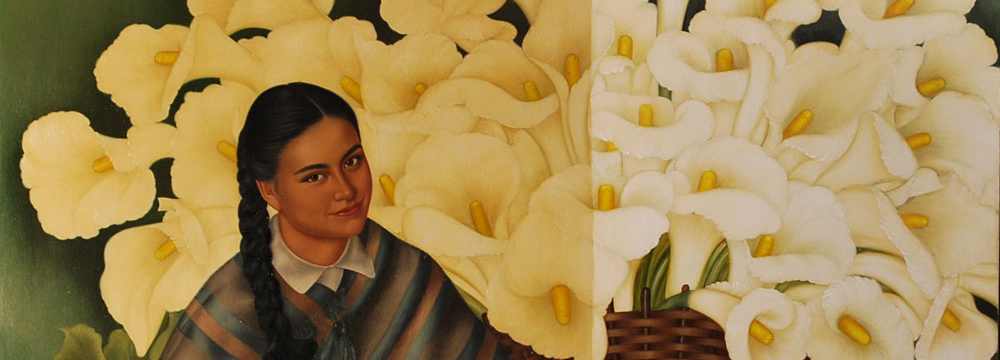
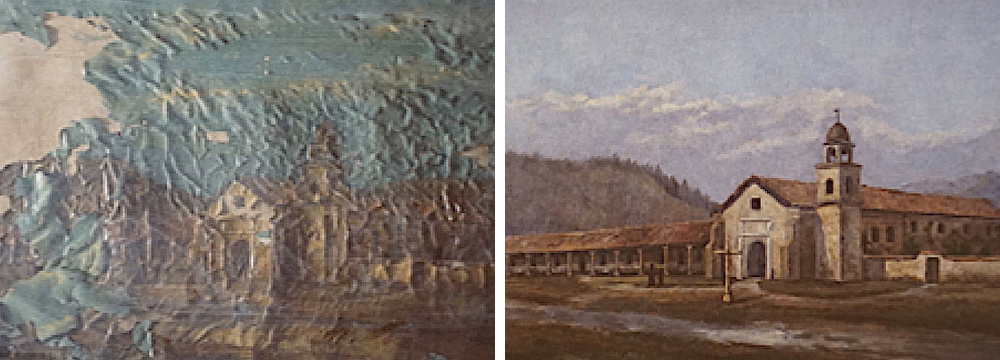
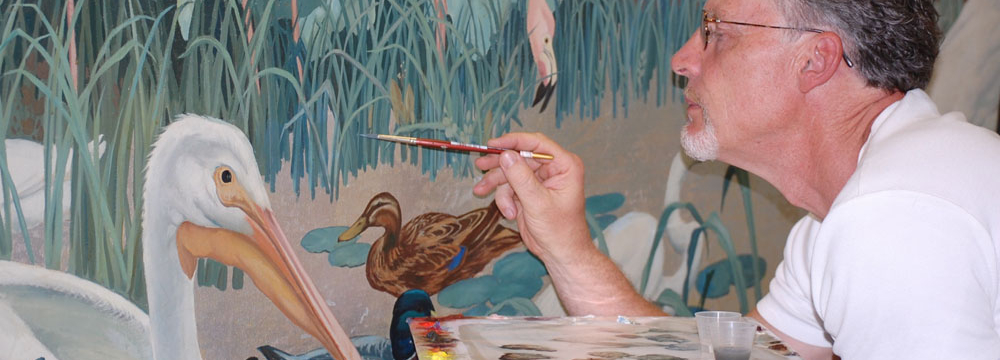
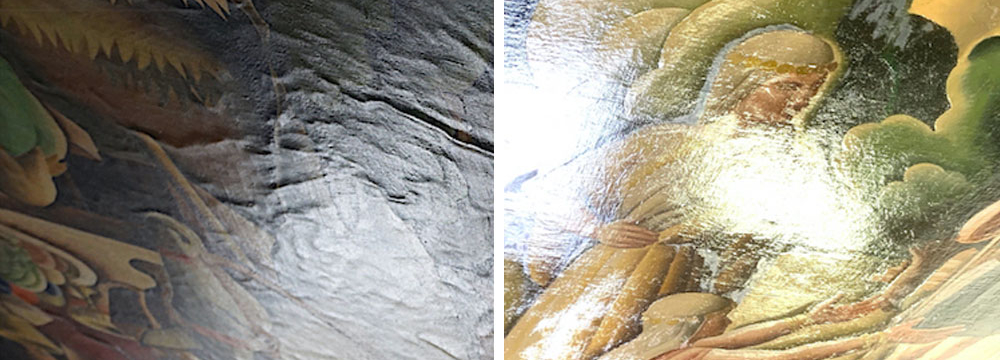

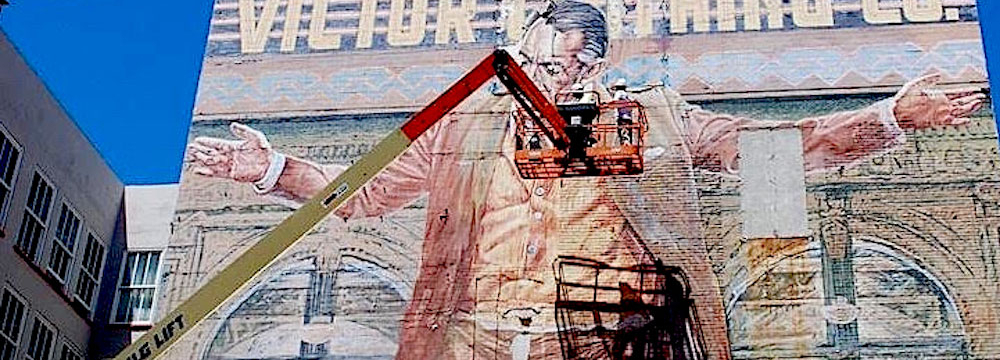
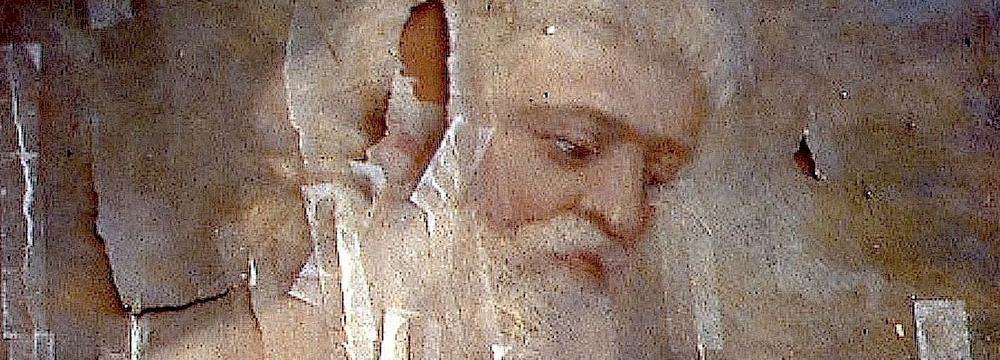
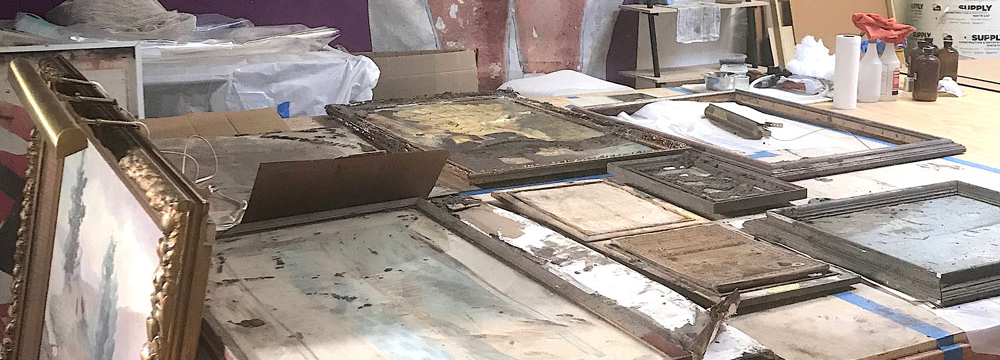

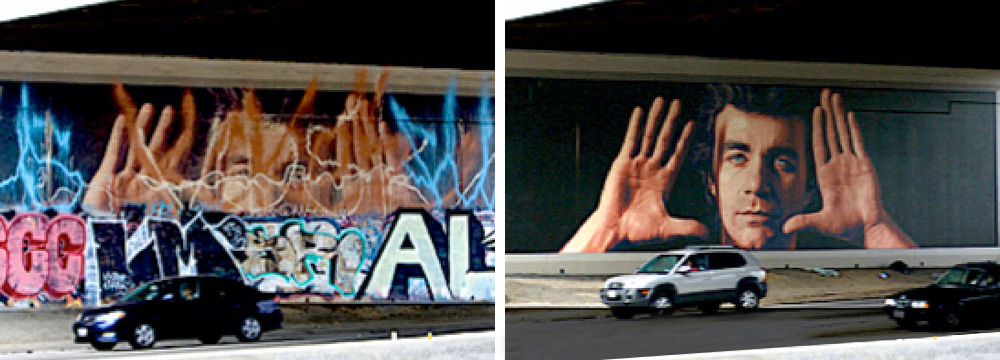
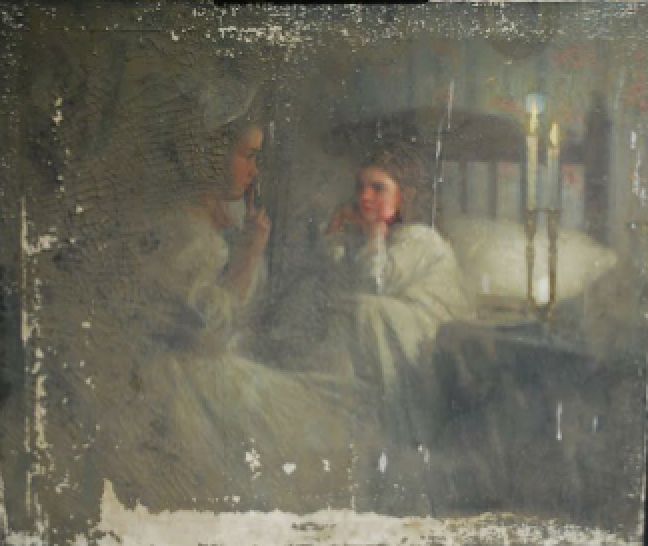
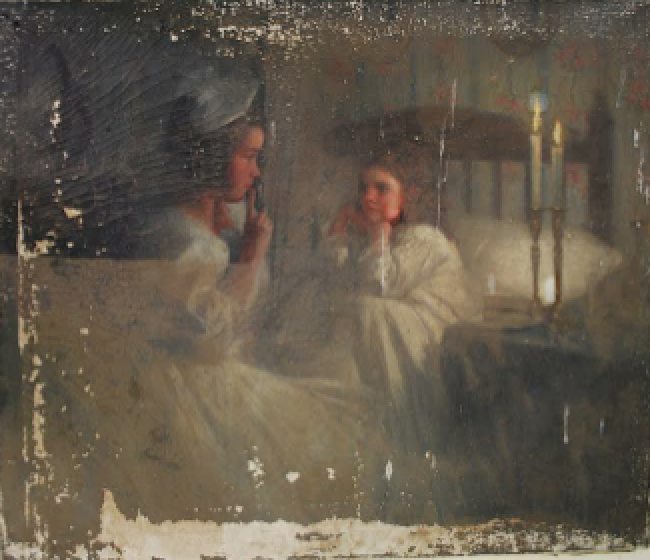
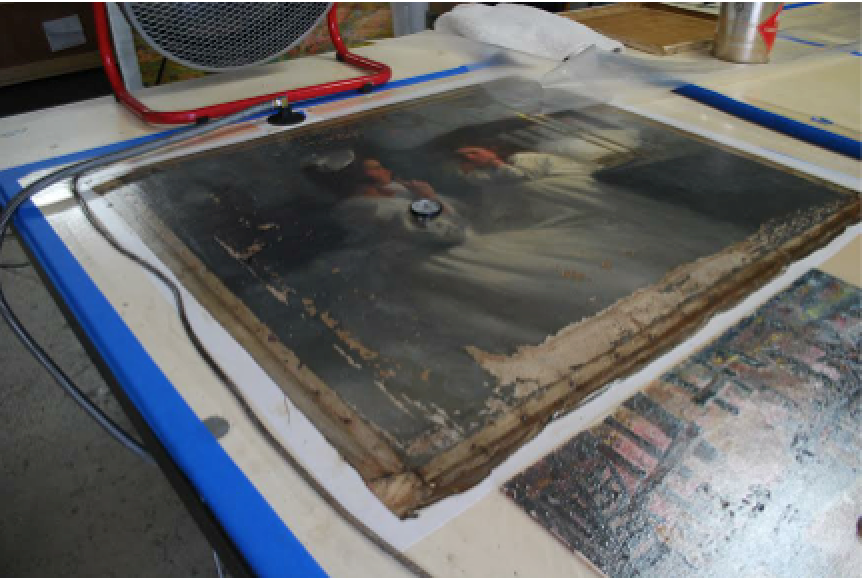
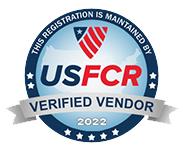
Good morning,
I own a framing shop in Somerset West South Africa. One of my clients brought in a water damaged oil painting. The painting was pasted with glue onto masonite (pressed wood approxamitely 5mm thick) and after some water damage warping and mould can be seen on the back of the masonite. The front still seems OK. Can I re-paste the paintinng onto another board to eliminate the warping?
Could you suggest any products I could use to clean the back?
It is very valuable to my client. Size: 900 x 1200mm
susanndelport@gmail.com
+2776 0232 405
Susann, yes, I believe I can give you some guidance on this but there are quite a few variable that we should discuss by phone. I’ll try to call you. Just in case though, here is my mobile number 805 570 4140 (CA, USA time zone) and my email is faclartdoc@gmail.com
The first thing I think of when I read through your site is paintings that are put into storage and forgotten about. It must happen a lot, but it is good to know that owners have an option with your company!